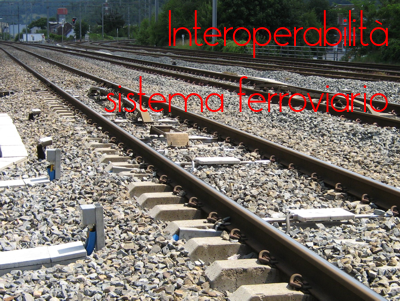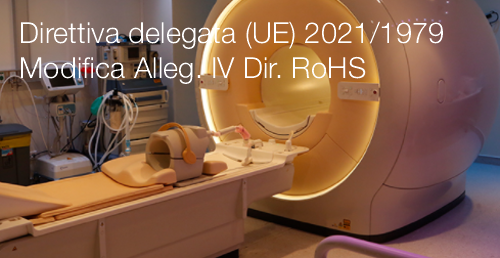Informazione tecnica HSE / 25 ° anno
/ Documenti disponibili:
45.641
/ Documenti scaricati: 34.670.703
/ Documenti scaricati: 34.670.703
Brussels, 07.05.2018
The Directive of the European Parliament and of the Council of 17 May 2006 on machinery, commonly known as the Machinery Directive, is the core European legislation regulating products of the mechanical engineering industries. It has the objectives to:
(i) ensure a high level of safety and protection for machinery users and other exposed persons and
(ii) to secure the free movement of machinery in the internal market. An additional objective for the protection of the environment is limited to the machinery used in pesticide applications.
In 2015, after six years of implementation, it was necessary to assess in the context of regular evaluation of the acquis, if the Directive has achieved its objectives in an efficient, coherent and relevant way and still has EU added value.
Therefore in line with the Commission's Regulatory Fitness and Performance (REFIT) programme,the Machinery Directive was subject to an evaluation.
Purpose of the evaluation
The Machinery Directive ('the Directive') was adopted in 2006, and became applicable as of December 2009. It was further amended in 2009 to include environment protection requirements for machinery used in pesticide applications.
The purpose of this evaluation is to analyse the performance of the Machinery Directive since it has entered into force. In this respect, given the hype of emerging digital technologies wave, the evaluation analyses also the Directive's suitability to such technologies, particularly Artificial Intelligence and Internet of Things.
This evaluation assesses the extent to which the Machinery Directive is fit for purpose, hence continues to deliver effectively, efficiently and at minimum cost the intended benefits for consumers and business. It also assesses whether the Directive is coherent with other EU legislation and policies, relevant to stakeholders needs, considering in particular new evolving technological development and has EU added value.
The evaluation provides evidence and conclusions that will form the basis for possible future improvements in order to keep it up to date so that it can achieve its objectives and produce the desired results.
Scope of the evaluation
The evaluation covers all relevant product categories in the scope of the Directive and 33 countries (EU28, EFTA and Turkey). It focuses on the period from 2010 (i.e. subsequent to the deadline for application of the Directive across Europe at the end of 2009) to 2016, seeking to understand trends over this period wherever possible. The evaluation covers the functioning of the Directive, including the processes involved in transposing, implementing and enforcing it, as well as associated assessment and monitoring procedures. The evaluation assesses the performance of the Directive according to five criteria: relevance, effectiveness, efficiency, coherence and EU added value.
____________
Table of contents
1. INTRODUCTION
1.1. Purpose of the evaluation
1.2. Scope of the evaluation
2. BACKGROUND TO THE INTERVENTION
2.1. Description of the Machinery Directive and its objectives
2.2. Baseline scenario and points of comparison
3. IMPLEMENTATION / STATE OF PLAY
4. METHOD
4.1. Short description of methodology
4.2. Limitations and robustness of findings
5. ANALYSIS AND ANSWERS TO THE EVALUATION QUESTIONS
5.1. Findings in relation to the Context of the Machinery Directive
5.1.1. Producers and production of machinery
5.1.2. Consumption and trade in machinery
5.1.3. Innovation in the machinery sector
5.2. Findings in relation to the Relevance of the Machinery Directive
5.2.1. Relevance of the two initial objectives
5.2.2. Relevance in light of technological developments, particularly emerging digital technologies
5.3. Findings in relation to the Effectiveness of the Machinery Directive
5.3.1. Effectiveness of the Directive's contribution to its objectives
5.3.2. Factors influencing the effectiveness of the Machinery Directive
5.4 Findings in relation to the Efficiency of the Machinery Directive
5.4.1 Costs involved as a result of the Machinery Directive
5.4.2 Benefits realised as a result of the Machinery Directive
5.4.3 Extent to which the costs are reasonable and proportionate
5.5 Findings in relation to the Coherence of the Machinery Directive
5.6 Findings in relation to the EU Added Value of the Machinery Directive
6. CONCLUSIONS
ANNEX 1 PROCEDURAL INFORMATION
1. Lead DG, Decide Planning/CWP references
2. Organisation and timing
3. Exceptions to the better regulation guidelines
4. Consultation of the RSB (if applicable)
5. Evidence, sources and quality
ANNEX 2 METHODS AND ANALYTICAL MODELS
1. Analysis of secondary data
2. Stakeholder Consultation
ANNEX 3 EVALUATION QUESTIONS
ANNEX 4 SYNOPSYS REPORT
Relevance
Effectiveness
Efficiency
Coherence
EU Added Value
How responses were used
Fonte: Commissione Europea
SWD(2018) 160 final
Collegati:
Regolamento delegato (UE) 2018/989 della Commissione del 18 maggio 2018 recante modifica e rettifica del regolamento delegato (UE) 2017/654 che integra il regolamento...

Direttiva 2008/57/CE del Parlamento europeo e del Consiglio del 17 giugno 2008 relativa all’interoperabilità del sistema ferroviario comunitario
GUUE L191/15 del 18.07.2008
En...

Direttiva delegata (UE) 2021/1979 della Commissione dell'11 agosto 2021 che modifica, adattandolo al progresso scientifico e tecnico, l...
Testata editoriale iscritta al n. 22/2024 del registro periodici della cancelleria del Tribunale di Perugia in data 19.11.2024